#kylix
Text

A satyr plays the double reed instrument known as an aulos to entertain Dionysus, who is crowned with ivy and holds his characteristic thyrsus (staff topped with a pinecone). Interior of an Attic red-figure kylix (drinking cup) by the potter Hieron and the painter Makron; 480s BCE. Found at Vulci, Italy; now in the Altes Museum, Berlin. Photo credit: ArchaiOptix/Wikimedia Commons.
#classics#tagamemnon#Ancient Greece#Classical Greece#Greek religion#Ancient Greek religion#Hellenic polytheism#Dionysus#Dionysos#Bacchus#satyr#satyrs#art#art history#ancient art#Greek art#Ancient Greek art#Classical Greek art#kylix#vase painting#red-figure#Altes Museum
273 notes
·
View notes
Text
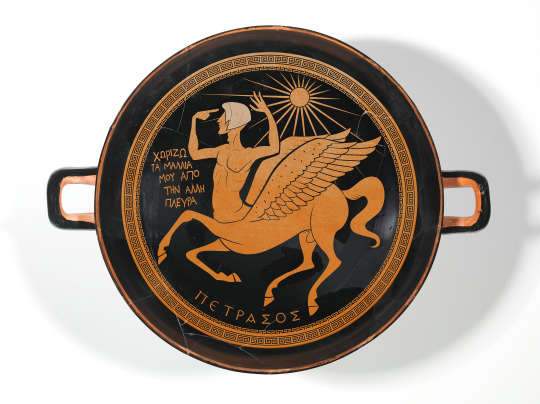
The Petesus Kylix
"χωρίζω τα μαλλιά μου από την άλλη πλευρά"
x-posted to instagram
⟶all Billy & White: Failures of Science posts
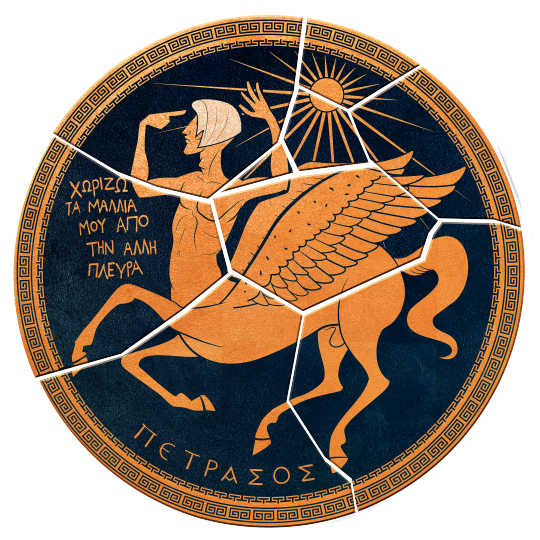

⟶all Billy & White: Failures of Science


reference images from theoi.com
It's Greece, bay-bee... everybody gotta have PENIS!
a side view of a kylix, a terracotta drinking cup for wine.




I fell down a rabbit hole of the different ways red-figure Greek vase-painters depicted wings on creatures.
#spanakopita#vbros#venture bros#venture brothers#pete white#pegasus#petesus#red figure pottery#kylix#ancient greece#greek mythology#myth#centaur#illustration#illustrator#adobe illustrator#art#red figure#mythological creature#mythology#greek#spanakos#ancient greek
71 notes
·
View notes
Text


~ Drinking cup (kylix).
Culture: Greek, South Italian
Period: Late Classical
Date: 350–330 B.C.
Place of origin: Italy, Paestum
Mwdium: Ceramic, Red Figure
#ancient#ancient art#history#museum#archeology#ancient history#archaeology#ancient pottery#kylix#drinking cup#Paestum#classical#ancient greek#greek#350 b.c.#330 b.c.
306 notes
·
View notes
Text

Stemmed Kylix with Cuttlefish
Greek, Mycenaean, 14th century BCE (Late Helladic IIIA2)
Popular shapes in their own time, such stemmed cups were commonly ornamented with marine motifs, cuttlefish in particular. Originally introduced to the mainland through preceding Minoan styles, this aquatic décor demonstrates a resurgence of Minoan cultural influence. The expertly duplicated and symmetrical application of the motif, however, remains quintessentially Mycenaean.
15 notes
·
View notes
Text
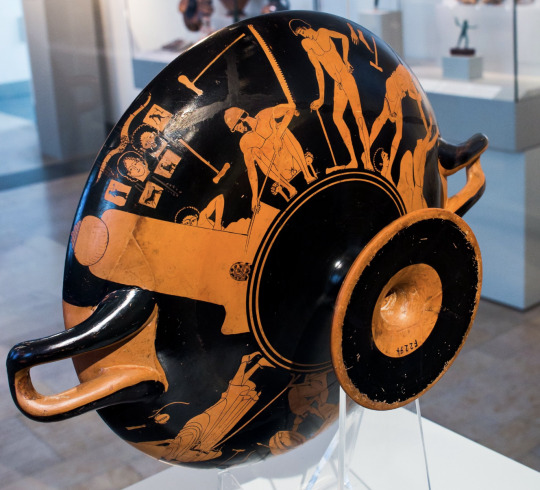
Kylix attr. Foundry Painter c. 490-480
terracotta D 30.5 cm
Berlin, Antikensammlung F2294
This image indicates metalworking (bronze) artisans creating things. Tools are along the walls as well as a shrine to Hephaestus and possibly Athena. Work shrines typically do not survive so this depiction of it in the metalworking shop is quite fascinating!
#greek#greek mythology#classics#aesthetic#goddess#hephaestus#athena#metalworking#craftsmanship#my post#metalwork#textiles#terracotta#bronze#kylix#foundry painter#berlin#museum#pots#ancient#ancient world#ancient greek#ancient history#greece#greek art#greek art and architecture
22 notes
·
View notes
Text

And every time we kiss, I swear I could fly
11 notes
·
View notes
Text
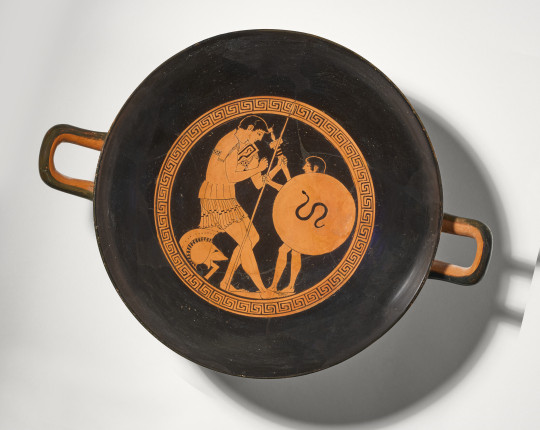
An attic red-figured kylix,
Attributed to the Triptolemos Painter, c. 480-470 BC.
Diameter excluding handles: 9 in (23 cm).
From the Zimmermann Collection,
Courtesy: Christie's
#art#history#design#style#archeology#antiquity#christie's#kylix#triptolemos#paint#plate#vessel#pottery#figure#stoneware#cup
10 notes
·
View notes
Text
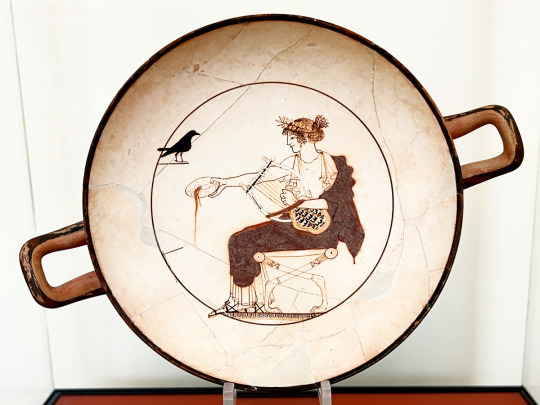
I can’t believe, literally cannot believe that I stood in the same room with this kylix. It’s Apollo playing a lyre while a crow watches and probably everyone of you has seen photos of it. It’s cracked in a few places but otherwise beautifully intact and well-preserved. The fine painted lines are so crisp and the colors are rich and bright. Zoom in and look at the sandals and legs of the stool. I only made it to the museum today; there was a lot to see, so tomorrow I’ll visit the archeological site and get to see where the Pythia sat.
25 notes
·
View notes
Text
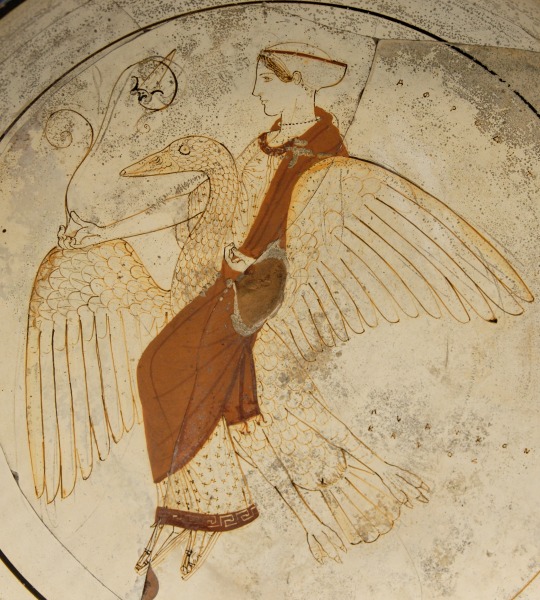
Aphrodite on a swan
* Tondo from an Attic Kylix
* Rhodes (tomb F43, Kameiros)
* circa 460 BCE
* Pistoxenos Painter
* British Museum
Attribution: British Museum, CC BY 2.5 https://creativecommons.org/licenses/by/2.5, via Wikimedia Commons
Photo: © Marie-Lan Nguyen / Wikimedia Commons
#Aphrodite#Rhodes#5th century BCE#Attic#kylix#ancient#Greek#art#goddess#animal#bird#swan#clothing#Pistoxenos Painter#British Museum#Marie Lan-Nguyen
167 notes
·
View notes
Photo
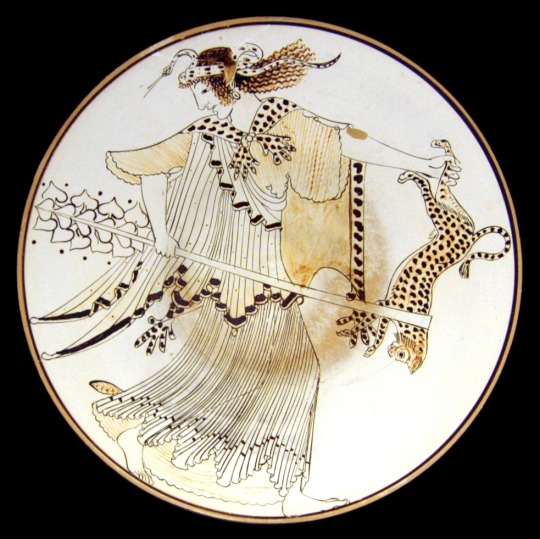
Maenad carrying a thyrsus and a leopard with a snake rolled up over her head, tondo of an ancient Greek Attic white-ground kylix, ca. 490-480 B.C.E., Vulci, Staatliche Antikensammlungen, Munich, Germany.
223 notes
·
View notes
Text

An episode from the Gigantomachy: Poseidon, wielding his trident, attacks the Giant Polybotes, while Gaia (from whom the Giants sprang) looks on. Interior of an Attic red-figure kylix (drinking cup) by the painter Aristophanes; ca. 410 BCE. Now in the Antikensammlung Berlin. Photo credit: Sailko/Wikimedia Commons.
#classics#tagamemnon#Ancient Greece#Classical Greece#classical mythology#Greek mythology#Gigantomachy#Poseidon#art#art history#ancient art#Greek art#Ancient Greek art#Classical Greek art#vase painting#red-figure#kylix#Antikensammlung Berlin
193 notes
·
View notes
Text


Red figure Kylix c.430 BC showing Hades and Persephone banqueting in the underworld. Hades holds a cornucopia and phiale, whilst his queen possibly holds a pomegranate. Excavated at Vulci and purchased by the British Museum in 1847 🏺🏛
#hades#persephone#king and queen of the underworld#receiver of many#kylix#red figure technique#greek art#vulci#british museum
12 notes
·
View notes
Text
Redid the OG kylix with better technical skills! Still can't keep those friggin handles even during the drying out though

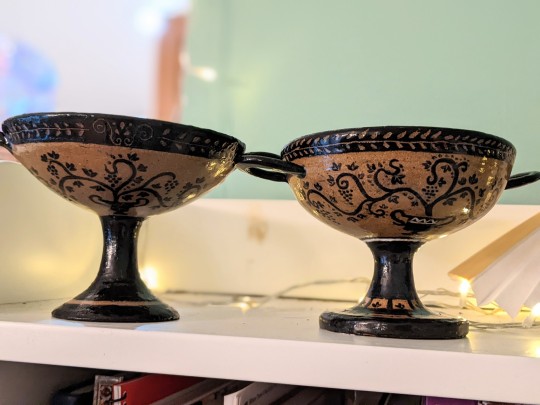
127 notes
·
View notes
Text
Which Greek letters are seen on this kylix?

Image description: Early form of the Greek alphabet on an Attic black-figure bowl
This kylix is part of the collection at the National Archaeological Museum of Athens.
Letters on the top side as far as I can tell:
Alpha Α
Beta Β
Gamma Γ (yes, it looks like a lambda, but that's how they used to write it)
Delta Δ
Epsilon Ε
Digamma Ϝ (super strange to see this- but maybe it's not written in Ionic)
Zeta Ζ (yes, it looks like an iota, again it's how it used to be written)
Eta Η
Theta Θ
Iota Ι
Kappa Κ
Lambda Λ (slightly older form again)
Mu Μ
Nu Ν
Omicron Ο
Pi Π
Rho Ρ (this one threw me off so badly, because why is that an actual R)
Sigma Σ
Tau Τ
Upsilon Υ (sometimes written like a v)
Chi Χ (but like a cross)
honestly have no idea what this extra O is standing for, maybe a miswritten Phi Φ? Although it's clear on the bottom side...
Psi Ψ (chicken foot type).
They are missing Xi Ξ and Omega Ω!
#I really wonder what time period this is from#and what dialect is seen here#because the letters are an interesting mix#ancient greek#greek language#greek alphabet#kylix#pottery#classics#dys blurbs
5 notes
·
View notes
Photo
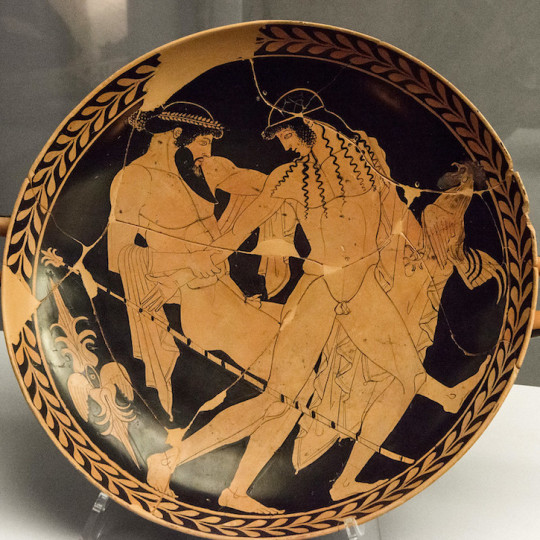
Zeus and Ganymede, Attributed to the Penthesilea Painter, 475-425 BCE
#zeus and ganymede#zeus#ganymede#attributed#attributed to#penthesilea painter#kylix#pottery#painting#art#ancient greece#ancient greek#475#475 bce#425 bce#425#ancient#greek
137 notes
·
View notes
Text


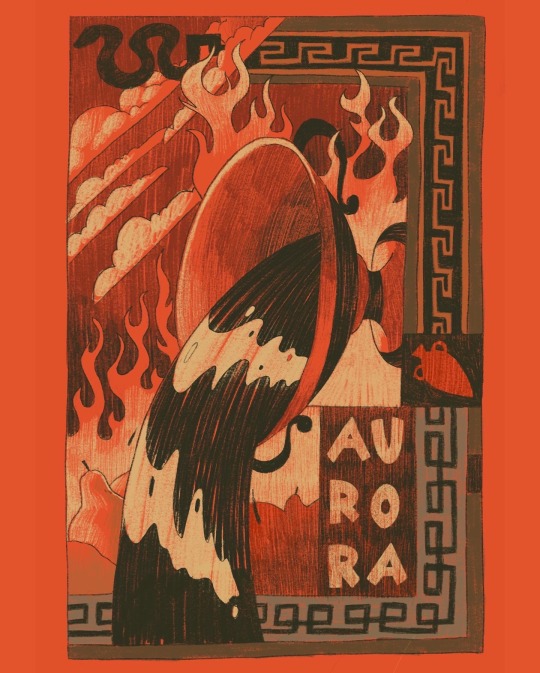
Initial sketch made on my phone (probably right before I fell asleep), secondary sketch and final :)
#my art#illustration#type#lettering#hand lettering#Aurora#Aurora music#procreate#Greek#Greek myth#greek mythology#Greek pattern#meandros#amphora#kylix#Greek pottery
50 notes
·
View notes